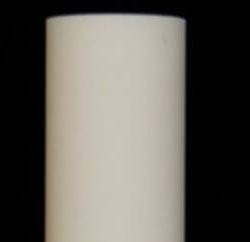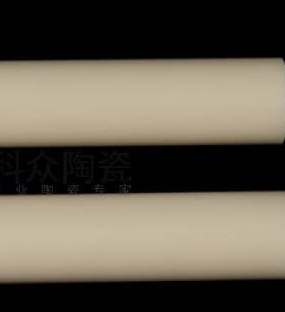- 29
- Dec
What is the difference between alumina ceramics and corundum?
What is the difference between alumina ceramics and corundum?

Alumina ceramic rod
1. Alumina ceramics;
Alumina ceramics is a ceramic material with alumina (Al2O3) as the main body, used for thick film integrated circuits. Alumina ceramics have good conductivity, mechanical strength and high temperature resistance. It should be noted that ultrasonic cleaning is required. Alumina ceramics is a kind of ceramics with a wide range of uses. Because of its superior performance, it has become more and more widely used in modern society to meet the needs of daily use and special performance.

Alumina ceramic tube
High-purity alumina ceramics are ceramic materials with an Al2O3 content of more than 99.9%. Because their sintering temperature is as high as 1650-1990 ℃, and the transmission wavelength is 1 to 6 μm, they are generally made of molten glass to replace platinum crucibles; use its light transmission It can be used as a sodium lamp tube, and it can be used as an integrated circuit substrate and high-frequency insulating material in the electronics industry.
Ordinary alumina ceramics are classified into 99 porcelain, 95 porcelain, 90 porcelain, 85 porcelain and other varieties according to different Al2O3 content. Sometimes those with 80% or 75% Al2O3 content are also classified as ordinary alumina ceramic series. Among them, 99 alumina porcelain is used to make high temperature crucibles, refractory furnace tubes and special wear-resistant materials, such as ceramic bearings, ceramic seals and water valve discs; 95 alumina porcelain is mainly used as corrosion-resistant and wear-resistant parts; 85 porcelain Because it is often mixed with some talc, the electrical performance and mechanical strength are improved, and it can be sealed with metals such as molybdenum, niobium, and tantalum, and some are used as electrical vacuum devices.
2. Corundum;
Corundum, whose name comes from India, is a mineralogical name. There are three main variants of the homogeneity of corundum Al2O3, namely α-Al2O3, β-Al2O3, and γ-Al2O3. The hardness of corundum is second only to diamond. Corundum is mainly used for high-grade abrasive materials, ceramic bearing materials for watches and precision ceramic machinery. Ruby-based artificial crystal as a laser emitting material. Rubies and sapphires are both corundum minerals. Except for the starlight effect, only translucent-transparent and brightly colored corundum can be used as gemstones. The red color is called ruby, while the other colors of corundum are collectively called sapphire in business.
The name Corundum is derived from India and is a mineralogical name. The gemologically qualified ones are called Ruby and Sapphire. Myanmar, Sri Lanka, Thailand, Vietnam, and Cambodia are the most important suppliers of high-quality rubies and sapphires in the world. Other producing countries include China, Australia, the United States, and Tanzania.
Corundum is a gemstone formed from the crystals of alumina (Al2O3). Corundum mixed with metallic chromium is bright red and is generally called ruby; while blue or colorless corundum is generally classified as sapphire.
Corundum ranks 9th in the Mohs hardness table. The specific gravity is 4.00, and it has a hexagonal column lattice structure. With the hardness of corundum and its relatively lower price than diamond, it has become a good material for sandpaper and grinding tools.
Corundum has a glass luster and a hardness of 9. The proportion is 3.95-4.10. It is formed under the conditions of high temperature, rich aluminum and poor silicon C, and is mainly related to magmatism, contact metamorphism and regional metamorphism.
Corundum is a man-made material made from bauxite as the main raw material in a mining furnace. It can be used as abrasive and refractory material. The white corundum with higher purity is called white corundum, and the brown corundum with a small amount of impurities is called brown corundum.
